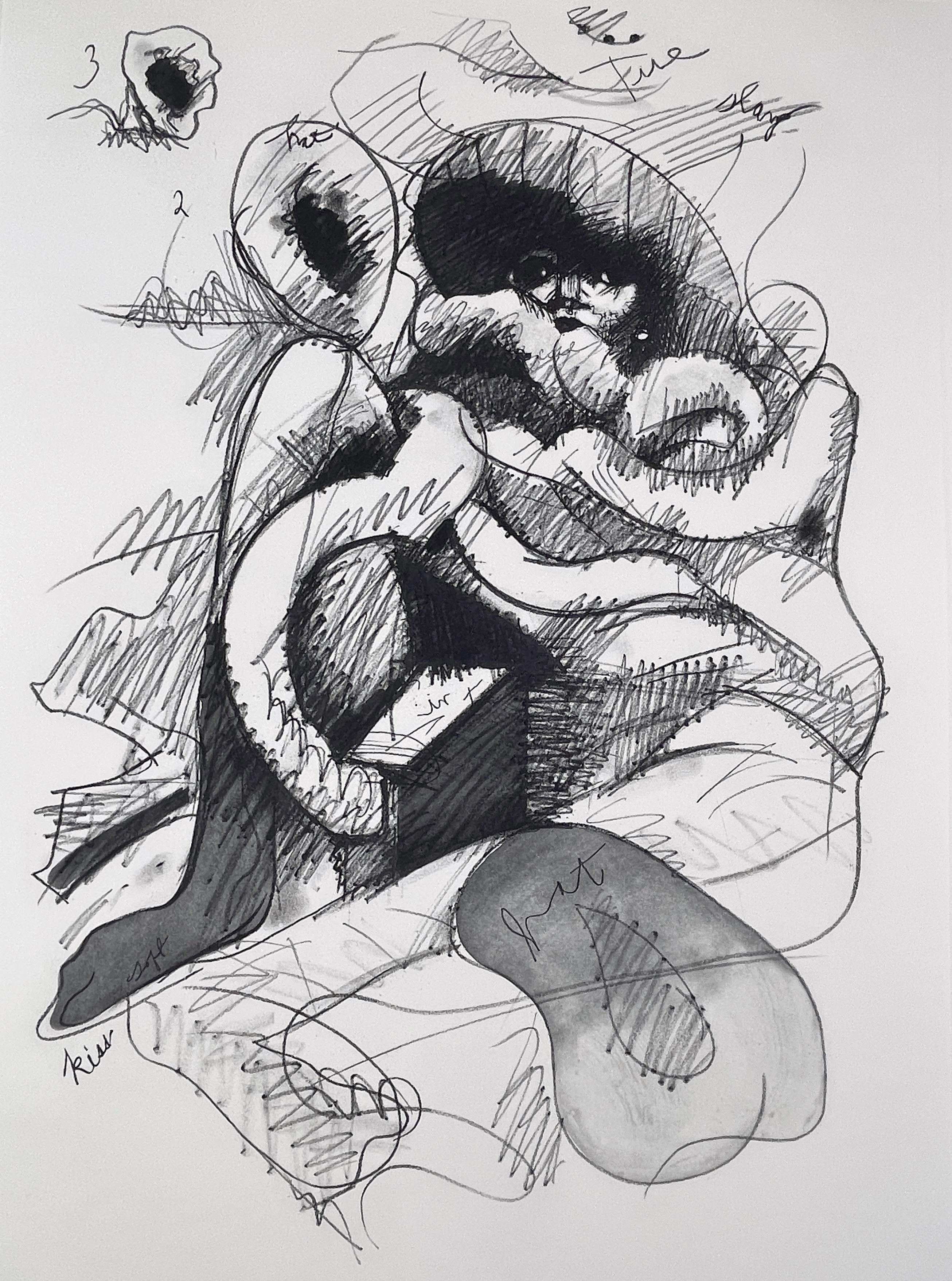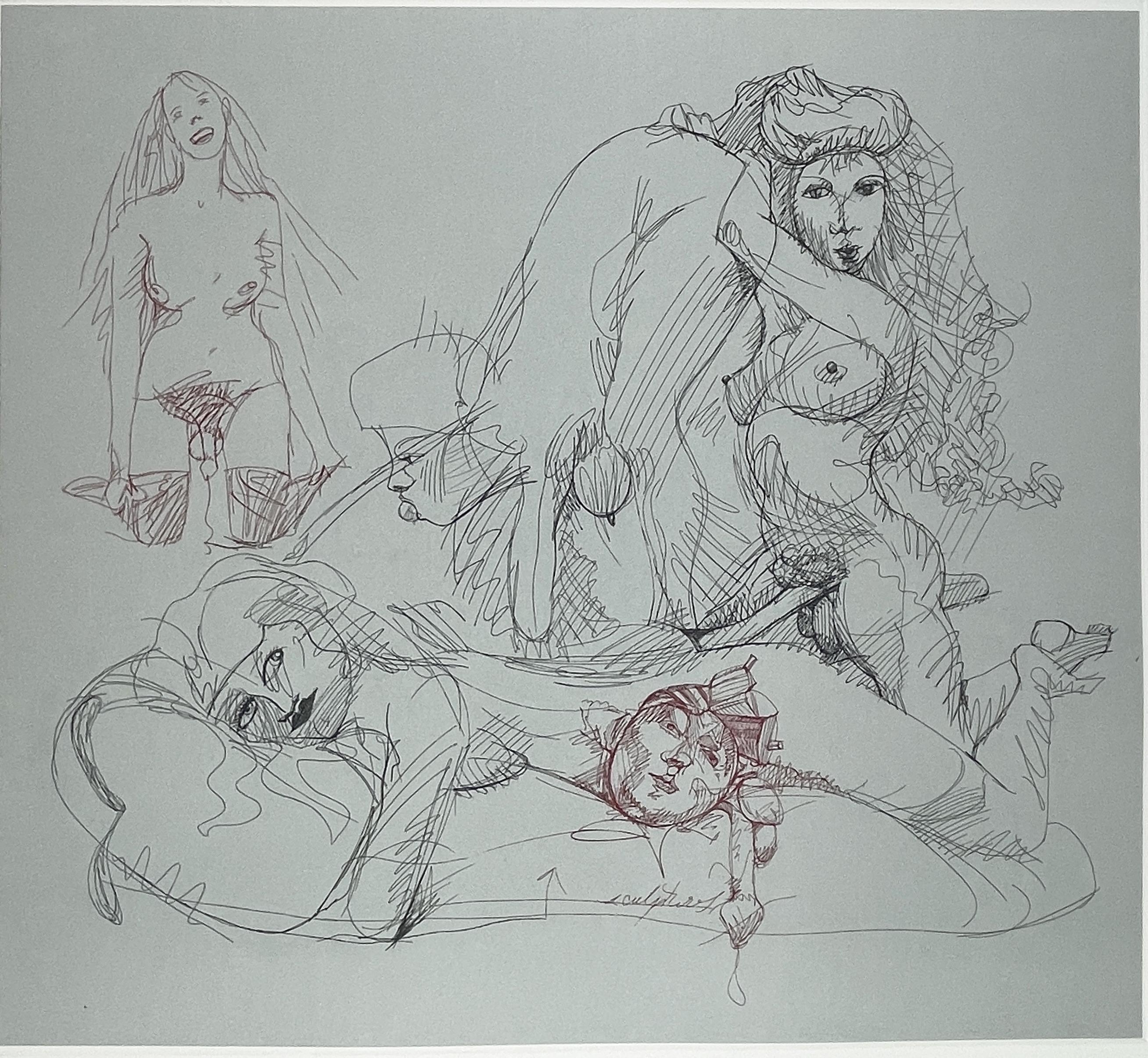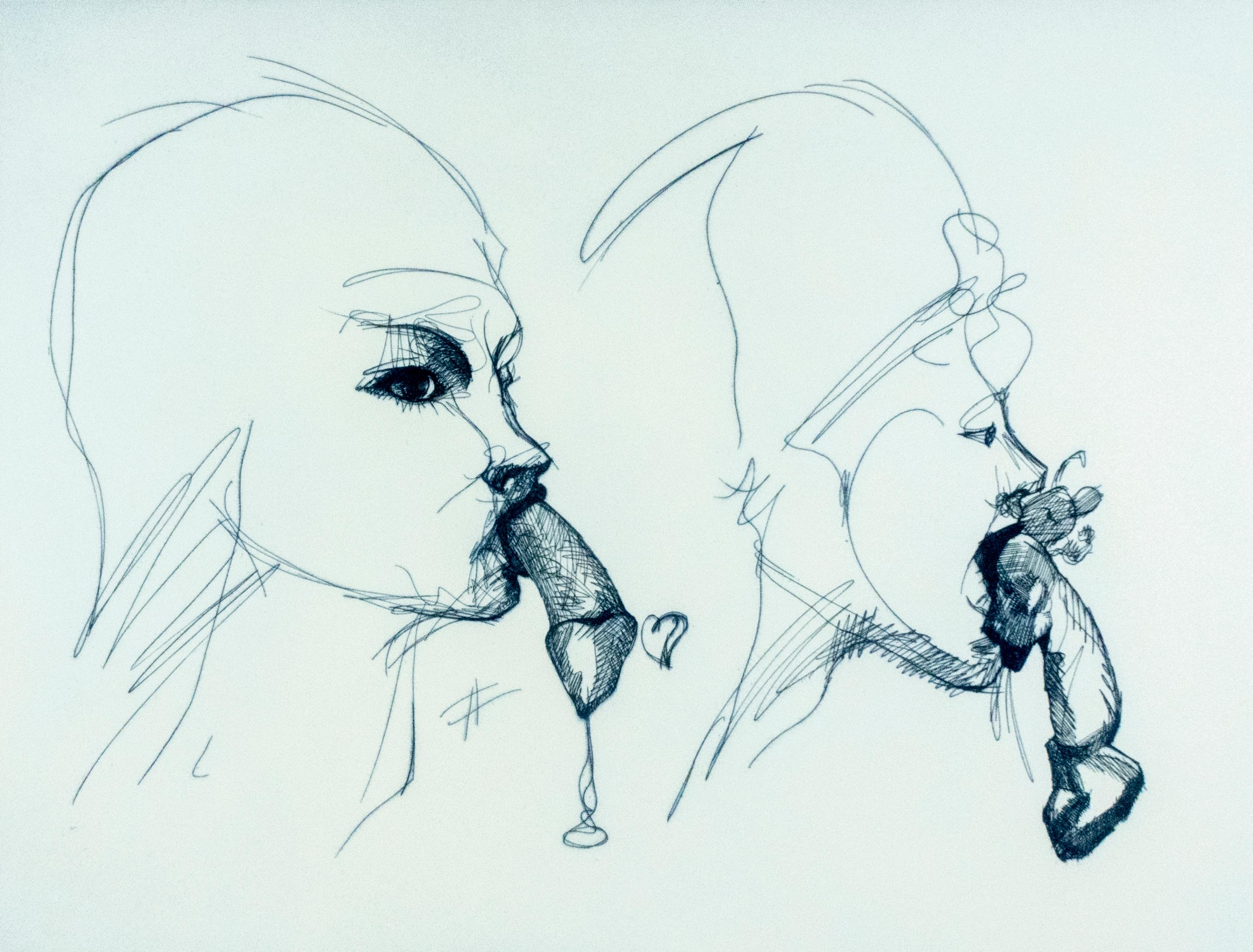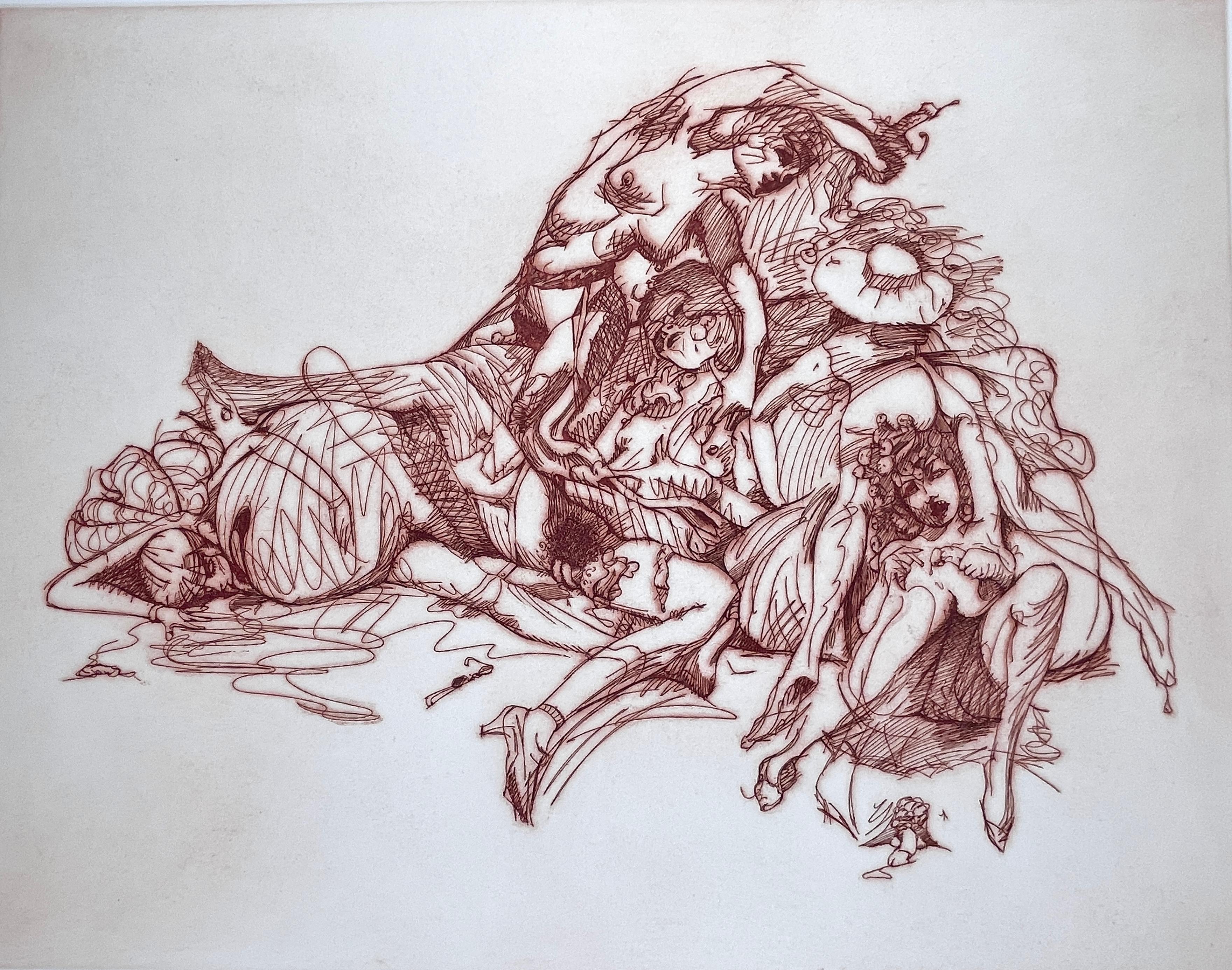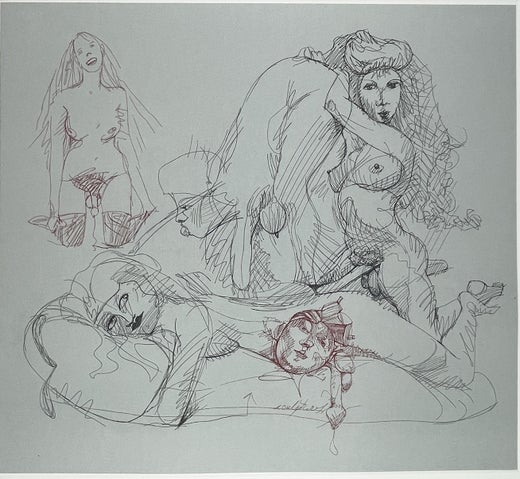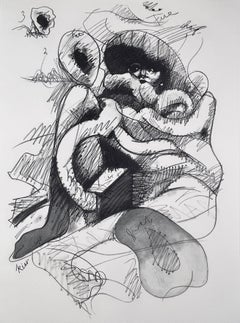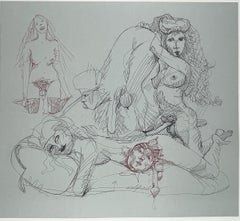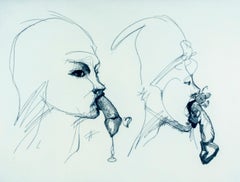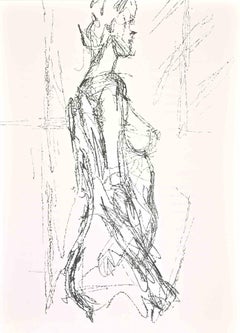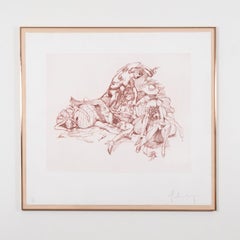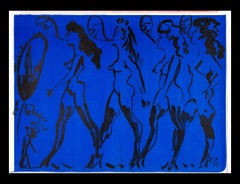Claes OldenburgBust (Mauve): Erotic drawing of nude bound woman1975
1975
About the Item
- Creator:Claes Oldenburg (1929, American, Swedish)
- Creation Year:1975
- Dimensions:Height: 36 in (91.44 cm)Width: 27.5 in (69.85 cm)
- Medium:
- Movement & Style:
- Period:
- Condition:This etching is not pre-owned and has been stored in the archives of the publisher since its publication.
- Gallery Location:New York, NY
- Reference Number:1stDibs: LU121125358672
Claes Oldenburg
One of the original Pop artists, Claes Oldenburg was born in Stockholm. The son of a Swedish diplomat, he spent his early years in Stockholm and Oslo until the family moved to Chicago in 1937.
Oldenburg attended Yale University, then returned to Chicago, where he worked for a newspaper and also attended drawing classes at the Art Institute. He moved to New York in 1956.
Oldenburg’s early art in New York were works of urban realism in cardboard and paper that were influenced by the work of Dubuffet and the New Realists, and were seen as a brutal response to society. In 1961 Oldenburg rented a storefront on the Lower East Side and sold brightly painted plaster objects as well as three-dimensional and wall reliefs based on hamburgers, pastries, men's and women's clothing, and other commodities. The signature soft sculptures followed, objects of commonplace household objects made of vinyl or canvas stuffed with kapok. These pieces transformed the medium — the soft sculptures are intended to be sensual experiences and commentary on our material world of objects and our relationship to them.
In 1965, still working in vinyl, plaster and cardboard, Oldenburg began making large works termed “Colossal Monuments,” which are large public sculptures with public and private meanings. In the 1970s, Oldenburg was fabricating large-scale works in durable materials such as steel, and working with Coosje van Bruggen, he had received many such public commissions in the United States and Europe.
Find authentic Claes Oldenburg sculptures, prints and other art on 1stDibs.
(Biography provided by Art Commerce)
- ShippingRetrieving quote...Shipping from: New York, NY
- Return Policy
More From This Seller
View All1970s Pop Art Nude Prints
Etching
1970s Pop Art Nude Prints
Etching, Aquatint
1970s Modern Figurative Prints
Etching
1970s Pop Art Figurative Prints
Etching, Aquatint
1970s Modern Figurative Prints
Etching
1970s Pop Art Figurative Prints
Etching, Aquatint
You May Also Like
1960s Contemporary Figurative Prints
Lithograph
1970s Pop Art Nude Prints
Etching
1990s Pop Art Abstract Prints
Lithograph
1960s Pop Art Nude Prints
Lithograph
1960s Modern Figurative Prints
Paper, Etching
1960s Surrealist Figurative Prints
Paper, Watercolor, Drypoint, Etching
